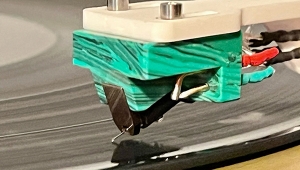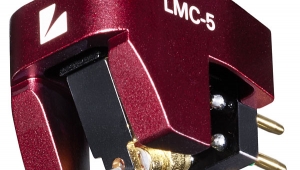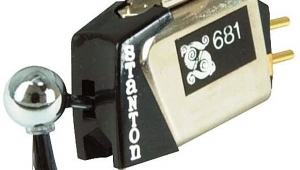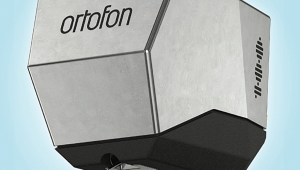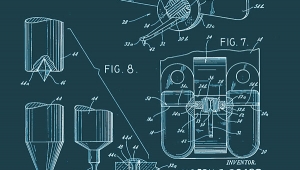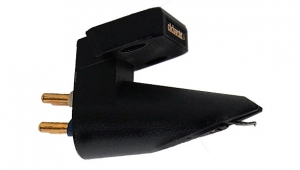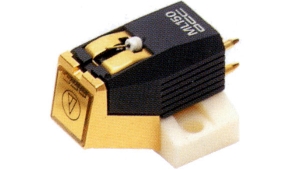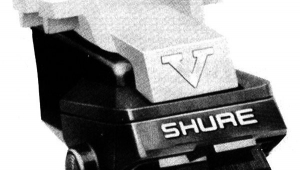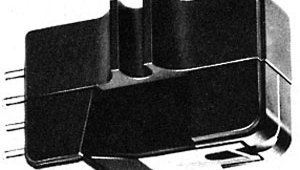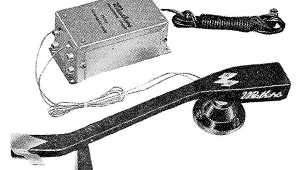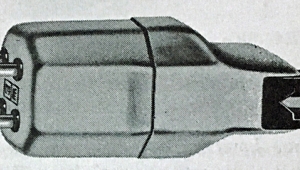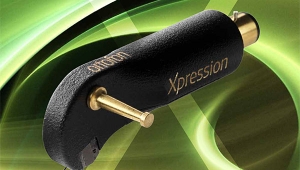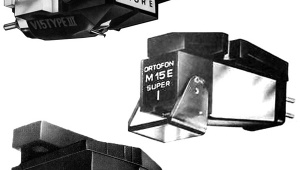| Columns Retired Columns & Blogs |
Koetsu Black MC phono cartridge Page 2
Once the Koetsu Black had acclimated to its new surroundings, its sound was lovely: smooth, textured, exceptionally colorful, and just a little rolled off in its treble range. A warning bell may go off in the minds of some readers on seeing a reviewer ascribe a "dark" sound to a product that's been painted black, let alone named Black. Fair enough: Let's just say the Black isn't bright. It may well be timbrally correct in some systems and to certain ears; in mine and to mine, it came off as just a mite huskier than neutral—which I enjoyed. It gave the horns in Tippett's ingenious Sonata for Four Horns, performed by the Barry Tuckwell Horn Quartet and recorded in 1968 (Argo ZRG 535), a wonderfully deep, rich glow, yet allowed the instruments to retain their characteristic note attack. And the Black made some of those musically irreplaceable yet sonically screechy Columbia and Deutsche Grammophon LPs sound that much more tolerable.
The Koetsu's timbral richness and realism were a joy on Sir Malcolm Sargent's great-sounding 1959 recording of Tchaikovsky's Symphony 5 with the London Symphony (Everest SDBR 3039). From the clarinets in the opening to the deeply textured final chord of the first movement, the Koetsu's performance was impossible to ignore: This wasn't just pretty sound in place of the music but sound as a part of the music—a device that produced such loveliness that I was reminded why the composer had chosen the various sonorities in the first place, and why Sargent made the choices he did in framing them.
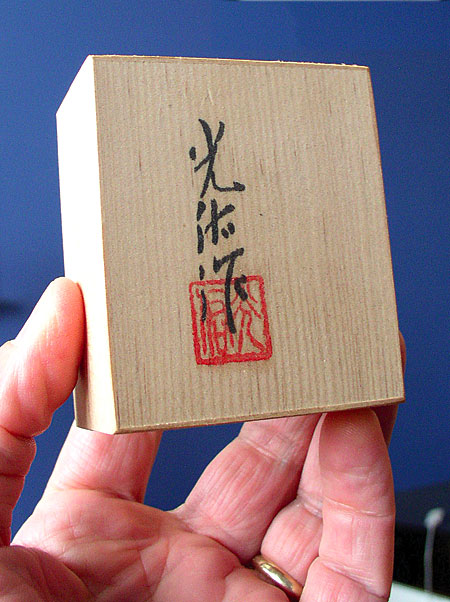
The Black sounded beautifully human. It presented singing voices with superb clarity and presence, its only real departure from the ideal being a slight smoothing of sibilants—which was also all right with me. But more important, the Koetsu clarified the distinctions between human voices and instrumental voices—not just timbrally, but in terms of their own sense of nuance and flow. When Gary Brooker sang "Now and then my life seems truer / Now and then my thoughts seem pure" in "Barnyard Story," from Procol Harum's Home (Regal Zonophone SLRZ 1014), the humanness of the note attacks and plosives, and the delicate increase in effort during the sustained notes, were laid bare: It was a really wonderful listening experience.
Unsurprisingly or not, the Black bowed to no other cartridge in making stringed instruments sound wonderful: thick but clear, with mountains of texture and a nearly indescribable sense of wood and varnish. Listening to Sir John Barbirolli's peerless 1962 recording of Vaughan Williams' Fantasia on a Theme by Thomas Tallis with the Sinfonia of London (EMI ASD 521 and elsewhere) was a hypnotic experience: The Koetsu unfolded the melody with believable flow and dramatic tension, and sounded magnificently tactile in the process: with the Black, I wanted to play that record over and over again.
The Koetsu had a lovely bottom end: colorful and deep, if just a shade slow. The electric bass in "Is This What You Wanted," from Leonard Cohen's New Skin for the Old Ceremony (Columbia 33167), had just a bit of overhang, as did the drummer's lively floor tom; still, both instruments sounded timbrally and texturally wonderful. And, counter to my expectations, the Koetsu's apparent reluctance to let go had no ill effect on upbeat, rhythmically insistent music: Despite what the most delusional flat-earthers have said over the years, this Koetsu did the rhythm-and-pacing thing very well, if not quite to Linn Akiva standards. Dynamic contrasts on dense pop records were also good: The Black allowed David Lovering's well-whapped snare to jump out of the weird mix in the Pixies' "Where Is My Mind," from Surfer Rosa (Rough Trade CAD 803), not to mention the generally indecipherable voices in "Tony's Theme" from the same album.
The Black also caught the nice way in which Sam Jones' double bass tracks Monk's piano in the opening bars of "Friday the 13th," from The Thelonious Monk Orchestra at Town Hall (Riverside RLP-1138). Also at Town Hall—but from a very different-sounding recording—"Little Sadie," from Doc Watson's On Stage (Vanguard VSD 9/10), sounded great with the Koetsu Black. The vocal melody had a nearly perfect sense of flow, and it was easier than usual to imagine Doc leaning into every phrase.
The biggest surprise of all: I was shocked at how well the Koetsu Black handled surface noise. Never before had I heard anything surpass the excellent Lyra range of cartridges in that regard, and I certainly didn't expect a new standard to be set by a pickup with such an unexotic, if perfectly nice, stylus tip. But the Black was easily— easily—the smoothest- and least scratchy-sounding cartridge I've heard. I still have my original copy of Neil Young's After the Gold Rush (Reprise RS 6383), which I bought new more than 35 years ago, and which has been played with myriad different needles, starting with the one on my family's monophonic Webcor record player. The Koetsu Black made it sound so nice I actually started to cry.
The biggest shortcoming of all: The Koetsu was more easily confused than my (significantly more expensive) Miyabi 47. When I used the Koetsu to play Neil Young's big production number, "Country Girl," from CSN&Y's Déj vu (Atlantic/Classic SD-7200), the recording sounded like a mess—which it pretty much is. But with the Miyabi in place, a comb had been run through the tangles, and it was at least possible to enjoy the music beneath all the wretched arrangemental excess.
No, the Koetsu isn't a Miyabi: That's not a qualitative ranking, but simply an observation that the Koetsu is too busy being a Koetsu. I imagine that the elder Sugano-san had a very personal set of priorities in mind when he designed his basic cartridge, as did the designer of the very vivid- and dynamic-sounding Miyabi. The Koetsu's take is more distant, and a little more lush than heart-stopping. If the Miyabi is like a dive into a cold lake—and it is—then the Koetsu Black is like being lulled into a dreamy half-sleep by a warm prairie breeze, or maybe a hot tub. (Incidentally, the recently designed EMT JSD 5 is like rolling around in a pile of freshly raked leaves on a crisp autumn day with a thickly built girl who loves you for who you are. Seriously.)
Conclusions
Are there better cartridges than the Koetsu Black? Sure. Are there better Koetsus? I guess. Is there a better way for an analog enthusiast to spend $1600? Maybe not.
In order to really appreciate the Koetsu Black, I had to remember some of the things that drew me to this hobby in the first place: the love of records, the love of well-made playback gear, the love of being startled by anything that sounds real. I also had to forget a few things—the myths, the misunderstandings, the cultish reviews both pro and con—that have swum around this line in the past.
Most of what I learned about the Koetsu Black came as a surprise, and all of those surprises were good. It didn't thrill me quite as much as my Miyabi, but it delighted me as much as any other moving-coil cartridge I've tried. I was also impressed by its build quality—something I can't help but associate with a very long service life—and, rightly or wrongly, by the sheer history of its provenance.
The Koetsu Black phono cartridge is a lovely, musical product, and a better-than-average value: There was at least $1600 worth of beauty in that little black box, and I'll hate to see it all go.
- Log in or register to post comments
